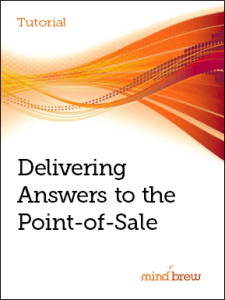I have a friend who’s a math teacher that likes to tell jokes. They’re often puns and plays on words that might make you chuckle — or just groan.
Recently, he told me a halfway decent one: “Parallel lines have so much in common… It’s a shame they’ll never meet.”
I found this joke mildly amusing because I understand enough about geometry that I got the gist. But if I had forgotten what my own math teacher taught me about parallel lines, the joke wouldn’t have been nearly as funny. Of course, being a math teacher, my friend would have been happy to explain how parallel lines are equidistant from each other and never meet, no matter how far they are extended in either directions… I probably could have even got him to draw some diagrams. But that would have completely ruined the joke.
But what do puns and mildly amusing jokes have to do with pricing?
Well…pricing guidance is like a joke because if you have to explain it, it’s not very good. The best way to get your sales team to adopt the guidance you provide them is to make it so intuitive that they don’t need any explanation. It’s just obvious what they should do next.
It might seem obvious that pricing guidance should be obvious. But in practice, pricing teams can get so caught up in charts, technologies, and even their own reasoning behind a price, that they neglect this basic principle. It often means that no one in the field is paying attention to (or comprehending) the data that pricing provides. In turn, the sales team keeps quoting prices the way they always have (and leaving margin on the table).
So how do you avoid this trap? We recommend following three basic principles:
- Deliver answers, not data. Because you work with data all day long, you can probably look at a spreadsheet and instantly come to some basic conclusions. But salespeople aren’t like you. If you show them a list of numbers, chances are high that they’ll get overloaded and ignore them. Instead of throwing a bunch of charts and numbers at them, tell them exactly what they should do. Clear, straightforward guidance on the next best action is the most likely to get the results you want. For more help on how to do that, check out Delivering Answers to the Point of Sale.
- Help salespeople make the right decisions. Salespeople love having the authority to make pricing and discounting decisions in the field. But giving them this level of authority can give most of us in pricing heartburn. Thankfully our research has found that the “pricing enablement” model means we no longer have to choose between distributed authority and performance improvement. For more insights on this, see Profitable Pricing Enablement.
- Make the Answers Valuable. You might find the buying pattern analysis your team did for Widget 40035 to be incredibly interesting. But there’s not a lot your sales team can do with that information. Instead, focus on delivering answers to the critical question the salesperson is grappling with: What will this customer actually pay? And keep in mind that there are others questions you can answer too… Which of my customers is showing signs of defection? Where are my upsell opportunities? Which customers could be buying more from us? PricingBrew has a lot of resources that can help answer these. Start with Using Pricing Analysis to Drive More Growth.
So what about you? Is your sales team acting on the guidance you provide? Are there ways you could do a better job presenting your analysis? Delivering No-Brainer Pricing Guidance To Sales can help you make improvements that will help your sales team “get it” without any extra explanation.

















